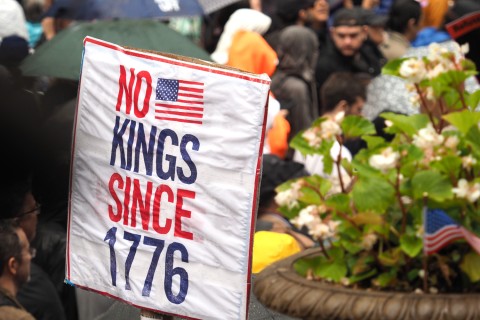A little train town called Chicago
Looks like Vox is off to a pretty good start. Ezra Klein & Co.'s news & politics vertical is poised to do even more than Klein's past work already has to expand serious discussion of public policy, to take it outside the bubble of people who come to the conversation with specialized knowledge.
Though if Matthew Yglesias's first post is any indication, Vox may make a different time-honored mistake of national political journalism: taking for granted that D.C. is the center of the universe, and that this universe exists entirely along the Eastern Seaboard. Yglesias's topic is one close to my heart: Amtrak. He points out that there is the right way to board trains, and then there is the weird airport-y way Amtrak makes you do it at larger stations. He's absolutely right to question this, and I appreciate both his breezy tone and his pro tips for getting around these ridiculous queues.
I do, however, wish Yglesias didn't imply that these larger stations are all on the Northeast Regional route. Hard as it is to believe, some of the nation's largest train stations—like its best burritos—are not found between D.C. and Boston. Chicago Union Station is among the four busiest Amtrak stations, along with being the terminus of the system's three longest routes and the transfer point for most cross-country trips. Yglesias doesn't say otherwise; this is not a fact-check but simply a second-city quibble. Where are our pro tips?
Admittedly, we've done less to deserve them than east coasters have. The Northeast Regional route and its speedier neighbor the Acela are responsible for much of Amtrak's financial success. Out here in the provinces, Amtrak loses money hand over fist. There just aren't enough of us riding these longer routes to make them profitable.
As Yglesias suggests, not having to queue up in a crowded waiting room for an hour might help. So would higher-speed rail options, supporters of which continue to be hopeful despite Wisconsin governor Scott Walker's best efforts.
And so would improving local infrastructure. While Chicago's local trains provide easier airport access than in any other U.S. city—at least when they aren't derailing and climbing the escalator—they don't connect directly with Amtrak. An ambitious plan released this week would correct this, along with many other shortcomings of Chicago's local rail. It's pretty blue-sky stuff—a bunch of new lines, extensions of others, rapid bus transit, a direct connection between the two airports—but as Emily Badger argues, there's value in this: "This is how cities expand the debate from one about incremental new capacity to one about job access and real estate value and economic growth."
As Badger points out, D.C.'s seen similarly ambitious transit proposals. Maybe Vox will write about those.





